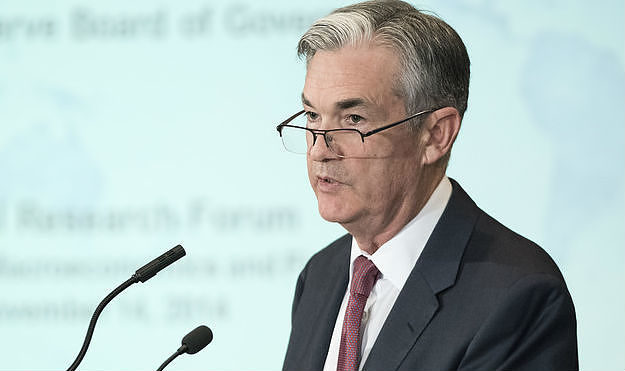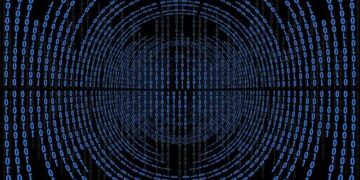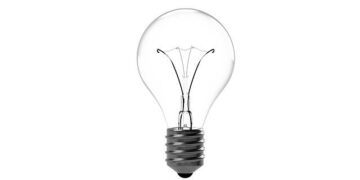Federal Reserve Chairman Jerome Powell will tell Congress on Wednesday that they do not expect it will be appropriate to reduce policy rate until they have greater confidence in inflation moving sustainably toward 2%, according to the prepared statement published by the Fed.
Key takeaways from Powell’s prepared statement
“It will likely be appropriate to begin dialing back policy restraint at some point this year.”
“Policy rate likely at its peak for this cycle.”
“The Economic outlook is uncertain; ongoing progress to 2% inflation is not assured.”
“We will carefully assess incoming data, evolving outlook, balance of risks.”
“Risks to both cutting rates too early and too fast as well as too late or too little.”
“The labor market remains relatively tight.”
“Fed’s restrictive stance is putting downward pressure on economic activity and inflation.”
“Labor demand still exceeds supply; nominal wage growth has been easing.”
“Risks to achieving dual goals moving into better balance.”
“While inflation is still above 2%, it has eased substantially.”
“The economy has made considerable progress over past year on dual mandate.”
This section below was published as a preview of Federal Reserve Chairman Jerome Powell’s testimony at 12:00 GMT.
Jerome Powell testimony in the US Congress will be a top-tier market moving event.
New clues on the Federal Reserve interest rate path are awaited.
US Dollar, stock markets and other asset classes could see big swings on Fed Chair words.
Jerome Powell, Chairman of the Federal Reserve System, will testify on March 6 in the US Congress, before the Senate Committe on Banking, Housing and Urban Affairs. The hearing, entitled as “The Semi-Annual Monetary Policy Report to the Congress”, will start at 15:00 GMT (10:00 US Eastern Standard Time), and it will have the full attention of all financial market players.

Jerome Powell is expected to address the main takeaways of the semi-annual Federal Reserve Monetary Policy Report, published last Friday. In that report, the Fed mentioned that it remains inappropriate to reduce the target range until policymakers have greater confidence inflation will move sustainably toward 2%, adding that they remain attentive to inflation risks. The publication also reiterated that risks to achieving the goals have moved into a better balance.
US representatives are expected to ask Powell about the interest rate outlook, inflation developments and a long Q&A session about the future path of interest rates and how will the Fed assess how much more monetary policy tightening is needed. Markets could see strong moves to the US Dollar, US Treasury bond yields, stock markets and all asset classes, including Gold price and all major currency pairs, during Powell’s testimony.
Central banks FAQs
Central Banks have a key mandate which is making sure that there is price stability in a country or region. Economies are constantly facing inflation or deflation when prices for certain goods and services are fluctuating. Constant rising prices for the same goods means inflation, constant lowered prices for the same goods means deflation. It is the task of the central bank to keep the demand in line by tweaking its policy rate. For the biggest central banks like the US Federal Reserve (Fed), the European Central Bank (ECB) or the Bank of England (BoE), the mandate is to keep inflation close to 2%.
A central bank has one important tool at its disposal to get inflation higher or lower, and that is by tweaking its benchmark policy rate, commonly known as interest rate. On pre-communicated moments, the central bank will issue a statement with its policy rate and provide additional reasoning on why it is either remaining or changing (cutting or hiking) it. Local banks will adjust their savings and lending rates accordingly, which in turn will make it either harder or easier for people to earn on their savings or for companies to take out loans and make investments in their businesses. When the central bank hikes interest rates substantially, this is called monetary tightening. When it is cutting its benchmark rate, it is called monetary easing.
A central bank is often politically independent. Members of the central bank policy board are passing through a series of panels and hearings before being appointed to a policy board seat. Each member in that board often has a certain conviction on how the central bank should control inflation and the subsequent monetary policy. Members that want a very loose monetary policy, with low rates and cheap lending, to boost the economy substantially while being content to see inflation slightly above 2%, are called ‘doves’. Members that rather want to see higher rates to reward savings and want to keep a lit on inflation at all time are called ‘hawks’ and will not rest until inflation is at or just below 2%.
Normally, there is a chairman or president who leads each meeting, needs to create a consensus between the hawks or doves and has his or her final say when it would come down to a vote split to avoid a 50-50 tie on whether the current policy should be adjusted. The chairman will deliver speeches which often can be followed live, where the current monetary stance and outlook is being communicated. A central bank will try to push forward its monetary policy without triggering violent swings in rates, equities, or its currency. All members of the central bank will channel their stance toward the markets in advance of a policy meeting event. A few days before a policy meeting takes place until the new policy has been communicated, members are forbidden to talk publicly. This is called the blackout period.
About Jerome Powell (via Federalreserve.gov)
“Jerome H. Powell first took office as Chair of the Board of Governors of the Federal Reserve System on February 5, 2018, for a four-year term. He was reappointed to the office and sworn in for a second four-year term on May 23, 2022. Mr. Powell also serves as Chairman of the Federal Open Market Committee, the System’s principal monetary policymaking body. Mr. Powell has served as a member of the Board of Governors since taking office on May 25, 2012, to fill an unexpired term. He was reappointed to the Board and sworn in on June 16, 2014, for a term ending January 31, 2028.”
Interest rates FAQs
Interest rates are charged by financial institutions on loans to borrowers and are paid as interest to savers and depositors. They are influenced by base lending rates, which are set by central banks in response to changes in the economy. Central banks normally have a mandate to ensure price stability, which in most cases means targeting a core inflation rate of around 2%. If inflation falls below target the central bank may cut base lending rates, with a view to stimulating lending and boosting the economy. If inflation rises substantially above 2% it normally results in the central bank raising base lending rates in an attempt to lower inflation.
Higher interest rates generally help strengthen a country’s currency as they make it a more attractive place for global investors to park their money.
Higher interest rates overall weigh on the price of Gold because they increase the opportunity cost of holding Gold instead of investing in an interest-bearing asset or placing cash in the bank. If interest rates are high that usually pushes up the price of the US Dollar (USD), and since Gold is priced in Dollars, this has the effect of lowering the price of Gold.
The Fed funds rate is the overnight rate at which US banks lend to each other. It is the oft-quoted headline rate set by the Federal Reserve at its FOMC meetings. It is set as a range, for example 4.75%-5.00%, though the upper limit (in that case 5.00%) is the quoted figure. Market expectations for future Fed funds rate are tracked by the CME FedWatch tool, which shapes how many financial markets behave in anticipation of future Federal Reserve monetary policy decisions.
Information on these pages contains forward-looking statements that involve risks and uncertainties. Markets and instruments profiled on this page are for informational purposes only and should not in any way come across as a recommendation to buy or sell in these assets. You should do your own thorough research before making any investment decisions. FXStreet does not in any way guarantee that this information is free from mistakes, errors, or material misstatements. It also does not guarantee that this information is of a timely nature. Investing in Open Markets involves a great deal of risk, including the loss of all or a portion of your investment, as well as emotional distress. All risks, losses and costs associated with investing, including total loss of principal, are your responsibility. The views and opinions expressed in this article are those of the authors and do not necessarily reflect the official policy or position of FXStreet nor its advertisers. The author will not be held responsible for information that is found at the end of links posted on this page.
If not otherwise explicitly mentioned in the body of the article, at the time of writing, the author has no position in any stock mentioned in this article and no business relationship with any company mentioned. The author has not received compensation for writing this article, other than from FXStreet.
FXStreet and the author do not provide personalized recommendations. The author makes no representations as to the accuracy, completeness, or suitability of this information. FXStreet and the author will not be liable for any errors, omissions or any losses, injuries or damages arising from this information and its display or use. Errors and omissions excepted.
The author and FXStreet are not registered investment advisors and nothing in this article is intended to be investment advice.
>>> Read full article>>>
Copyright for syndicated content belongs to the linked Source : FXStreet – https://www.fxstreet.com/news/jerome-powell-speech-preview-fed-chair-testifies-in-us-congress-202403061200






























